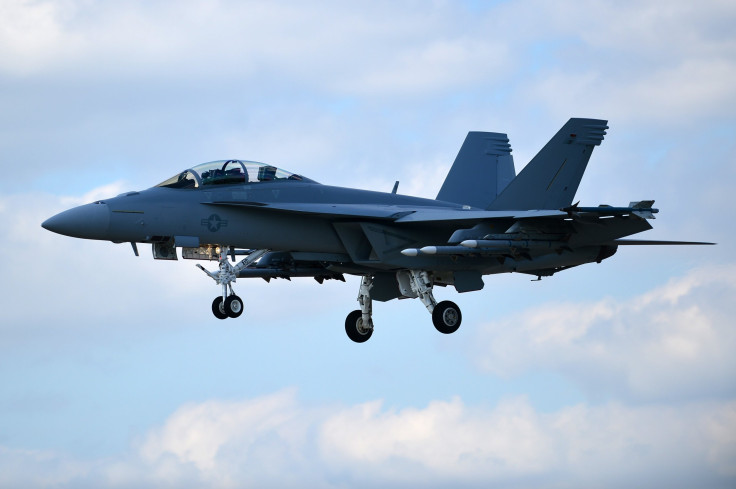US Navy Poised To Order New Boeing Fighters, F/A-18 Super Hornet Jets Could Be Ordered Soon

The U.S. Navy has given a clear indication it may be on the brink of ordering a new batch of F/A-18 Super Hornet fighter jets as it looks to deal with an unexpected increase in operational requirements and a delay in receiving Lockheed Martin F-35 stealth jets, a top U.S. military official said. The potential order would go some way to fulfilling a shortfall of strike fighters on the nation's aircraft carriers, Rear Admiral Michael Manazir, director of air warfare for the U.S. chief of naval operations, told a Congressional panel, according to a Reuters report published Tuesday evening.
Should the order come to fruition, it would enable F/A-18 manufacturer Boeing to extend its St. Louis, Missouri, production by a year, securing jobs through the end of 2018. There have been fears that jobs at the Boeing plant would be adversely affected after the company lost out to Northrop Grumman in its bid to build the Air Force's new long-range bomber.
Even if the Navy decides to order the jets, it is not clear that it will have the money to do so. Presumably, funds made available by last week's 2016 governmental budget deal between the White House and Congress would pay for the additional F/A-18 jets. However, even with the budget deal, Congress will need to trim approximately $5 billion from the budget. It was not yet completely known where that axe will fall, although it's likely to be in the military appropriations area.
Boeing spokesman Todd Blecher said it was too soon to respond to Manazir's comments since the Pentagon was still finalizing its fiscal 2017 budget plans, which will reflect the Navy's decision on possible Super Hornet purchases.
Manazir's testimony in front of the House subcommittee echoes that of former Chief of Naval Operations Admiral Jonathan Greenert, who said the Navy would need two to three additional squadrons of Super Hornets, or around 24 to 36 new aircraft.
The Navy's initial preference, said Manazir, was to accelerate its purchases of F-35 jets, but at the moment they are not equipped to carry all the weapons required by the Navy and would less able to fulfill mission requirements.
© Copyright IBTimes 2024. All rights reserved.












